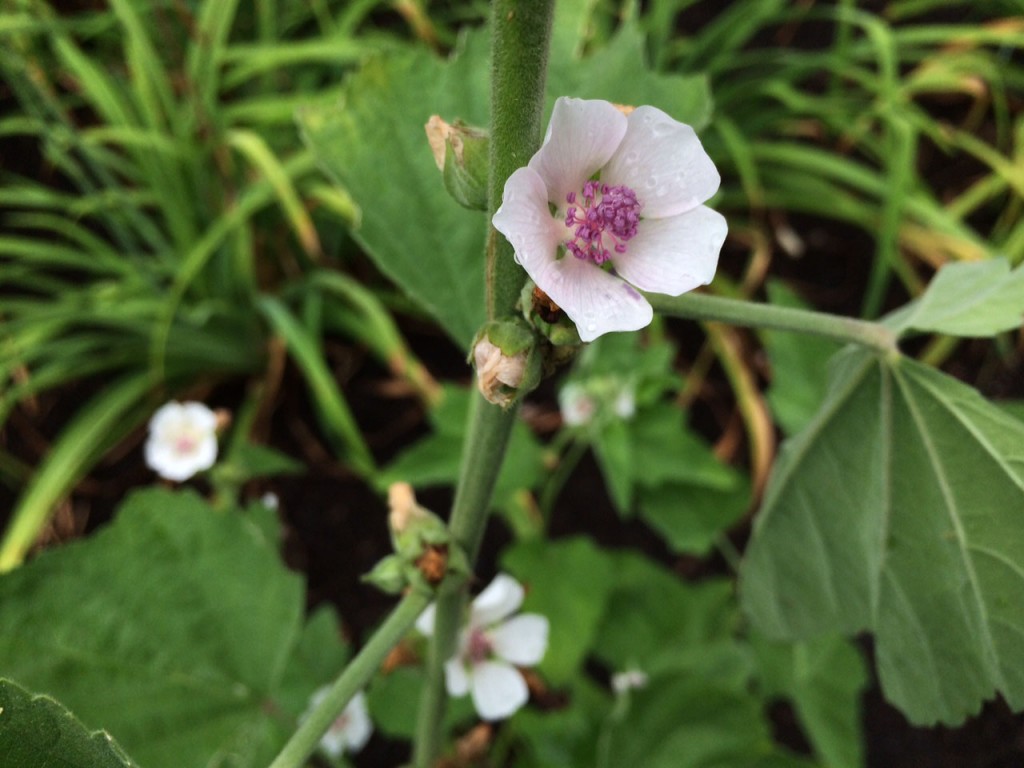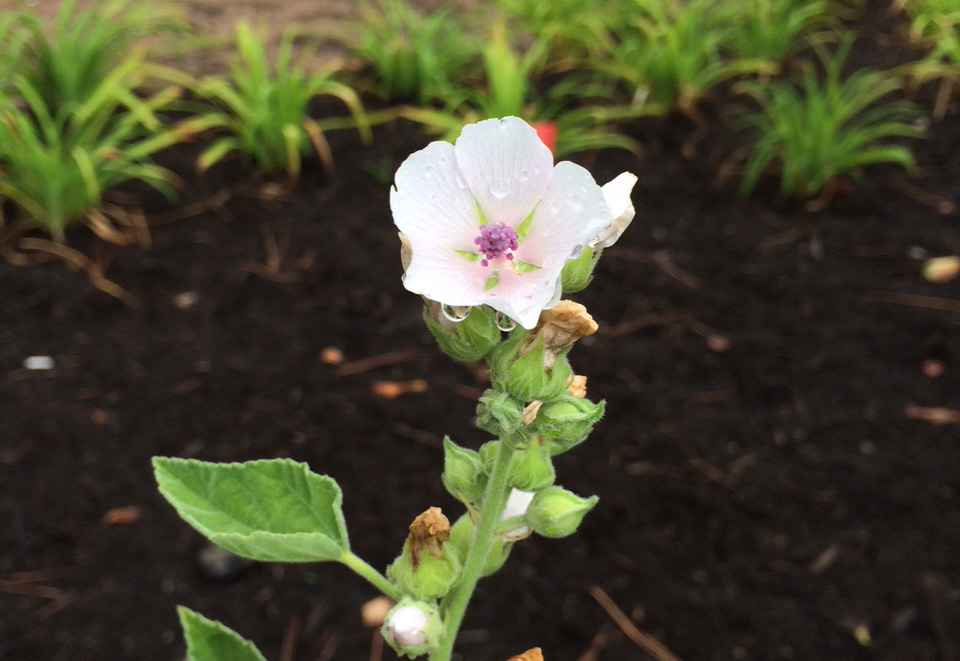The Original Marshmallow
Ever wonder where marshmallows came from? Here’s the plant that started it all: Althaea officinalis. It grows right here at Lewis Ginter Botanical Garden in our new Edible Display Garden! Egyptians first discovered its healing properties over 2,000 years ago. Most commonly the plant sap was combined with honey and it was used to treat sore throats in children because both the root and leaves contain a gummy substance called mucilage that can coat and sooth the throat, or even the stomach. According to the University of Maryland Medical Center medical studies have shown that this mucilage can sooth a variety of mucus membranes.
The French popularized the sticky confection in the 1800s, mixing the plant sap with egg whites and sugar, and allowing it to harden. As manufacturing techniques developed, eventually gelatin replaced the plant sap, says Freya Smith (Guild of Food Writers). By the mid-1900s, Alex Doumak, a French marshmallow maker, further refined the production process with a process known as extrusion.
The leaves can be eaten raw or cooked, and can even be used to thicken soup.
Intrigued by this amazing and beautiful plant? Why not pay it a visit this summer while it’s blooming? You will find it in our new Edible Display Garden.
And after you roast your marshmallow for s’mores over the bonfire, during Dominion GardenFest of Lights, you can make a small detour to thank this lovely plant: the marshmallow, Althaea officinalis.

